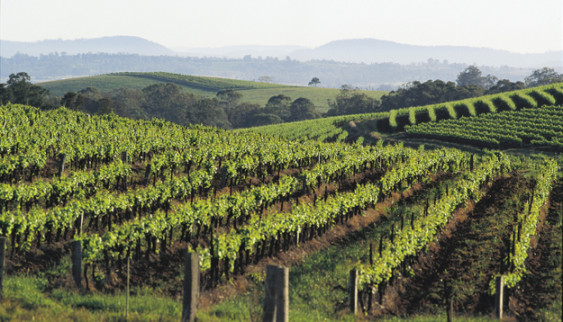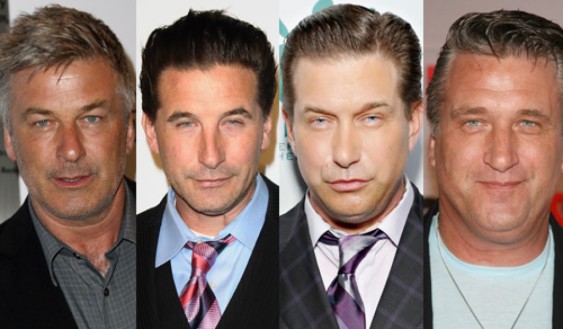Of Australia’s 60 or so designated wine regions, only a few, such as the Barossa and the Yarra Valley, are well known beyond its borders. Today, I’d like to introduce you to one of its lesser-known but still famous and still fabulous regions, the Hunter Valley.

The Hunter Valley has a few things going for it, including its proximity to Sydney.
Think of it this way. If Australia’s wine regions were Baldwins, Barossa would be Alec, the big, brash star. Yarra would be Stephen, recognizable and commanding a soft spot in your heart. I mean, he was in Bio-Dome, but he was also in The Usual Suspects. On the other hand, the Hunter Valley would be William. Sure, he might not be the best-known Baldwin, but he was in some pretty cool flicks like Backdraft, and The Squid and the Whale, and he’s worth getting to know.

If Australian wine regions were Baldwins, the Hunter would be Stephen. Famous but not as well known.
The Hunter has a few things going for it that no Baldwin does, though. First, it’s just about a two-hour drive from Sydney in the state of New South Wales, so if you happen to be visiting Australia, you can get there pretty easily.
Second, it’s Australia’s oldest wine region. People first arrived at the turn of the 19th century, and by 1823 there were 20 acres of vineyards there. That grew to over 500 acres by 1840…so clearly something was working.
Today, the Hunter Valley has over 150 cellar doors (that’s what they call tasting rooms down under), and has become renowned for its Chardonnay, Semillon and Shiraz. That’s right, it’s not just Barossa that makes the stuff. You’ll also find Cabernet Sauvignon and even some varieties like Verdelho and Tempranillo that you do not typically find in Australia.
The region is hot and can be humid and prone to more rain than some other parts of Australia, so the grapes tend to ripen with a bit less sugar. That means, very generally, that the Shiraz from here tends to have less alcohol to it, finer tannins (depending on a lot in the winemaking process), and is more medium-bodied. However, it is still nuanced and earthy with characteristic notes of plums, red cherry and even some savory flavors and spice to it. All of that tends to make the Shiraz’s here quite food-friendly because you won’t get full after a glass. Which is good, because it means to you get to drink more wine!
Another way to think about it is like this. If Barossa Shiraz is more of a heavyweight like George Foreman, Hunter Valley Shiraz would be more like an agile Sugar Ray Leonard.

Be sure to stop in at Briar Ridge for a tasting of the wines and the antipasto platter.
The region is also known for an unusual white grape variety, Semillon. Semillon is typically associated with the Entre Deux Mers appellation of Bordeaux, France, where it is often blended with Sauvignon Blanc. However, in the Hunter, the grape can stand on its own, and produces full-bodied white wines with characteristic yellow-fruit and honeyed notes along with just the right balance of acidity to keep them tasting fresh and light. Think of it like that ray of sunshine that rouses you from an unplanned afternoon nap. It starts out mellow and golden, but is intense enough to wake you up.
But enough of me explaining. I actually sat down with one of the area’s award-winning winemakers, Gwyn Olsen of Briar Ridge in the Mount View sub-region, to get her take on Hunter Valley wines, what sets them apart from Australia’s other wines, and which ones you should try. Here’s what she had to say.
Among the wines Gwyn showed me, I was really taken with two in particular insofar as they demonstrated some of the region’s defining traits.
The 2014 Dairy Hill Single Vineyard Semillon, which as Gwyn noted, has some really mouthwatering flavors that you might find in Thai cuisine, like kefir lime leaf and lemongrass, as well as acidity that is delicate and won’t make your teeth squeak. I’d try it with Asian food, but Gwyn suggests having a glass with fresh oysters. Or better yet, sloshing some of it into the shell with the oyster and shooting the whole mouthful.
The other wine that stood out to me was the 2013 Dairy Hill Single Vineyard Shiraz. It basically exemplified the traits I’d come to expect in Hunter Valley Shiraz – those red fruits like ripe plum and cherry, spicy notes like black pepper and perhaps the faintest hint of clove, and tannins that were evident but not overpowering thanks to French oak aging.

If you get to the Hunter Valley, book a sunrise hot-air balloon ride with Balloon Aloft.
If you happen to visit the Hunter Valley yourself, in addition to a stop at Briar Ridge for a wine tasting along with a beautiful antipasto plate, I’d also highly suggest stopping Brokenwood Wines, established in 1970, for a benchmark of the terrific Shiraz this area is capable of producing. On the Semillon side, make time t pop into Tyrrell’s Wines, a family-owned producer dating to 1858, to taste some of the wines that helped make this region famous.
There are also some amazing restaurants in the area where you’ll want to get a reservation, including Circa 1876 and Bistro Molines (just down the road from Briar Ridge). My final suggestion? Book a sunrise hot-air balloon ride with Balloon Aloft for a picturesque overview of the valley. There’s nothing cooler than watching mobs of kangaroos hopping through the vineyards at dawn!

